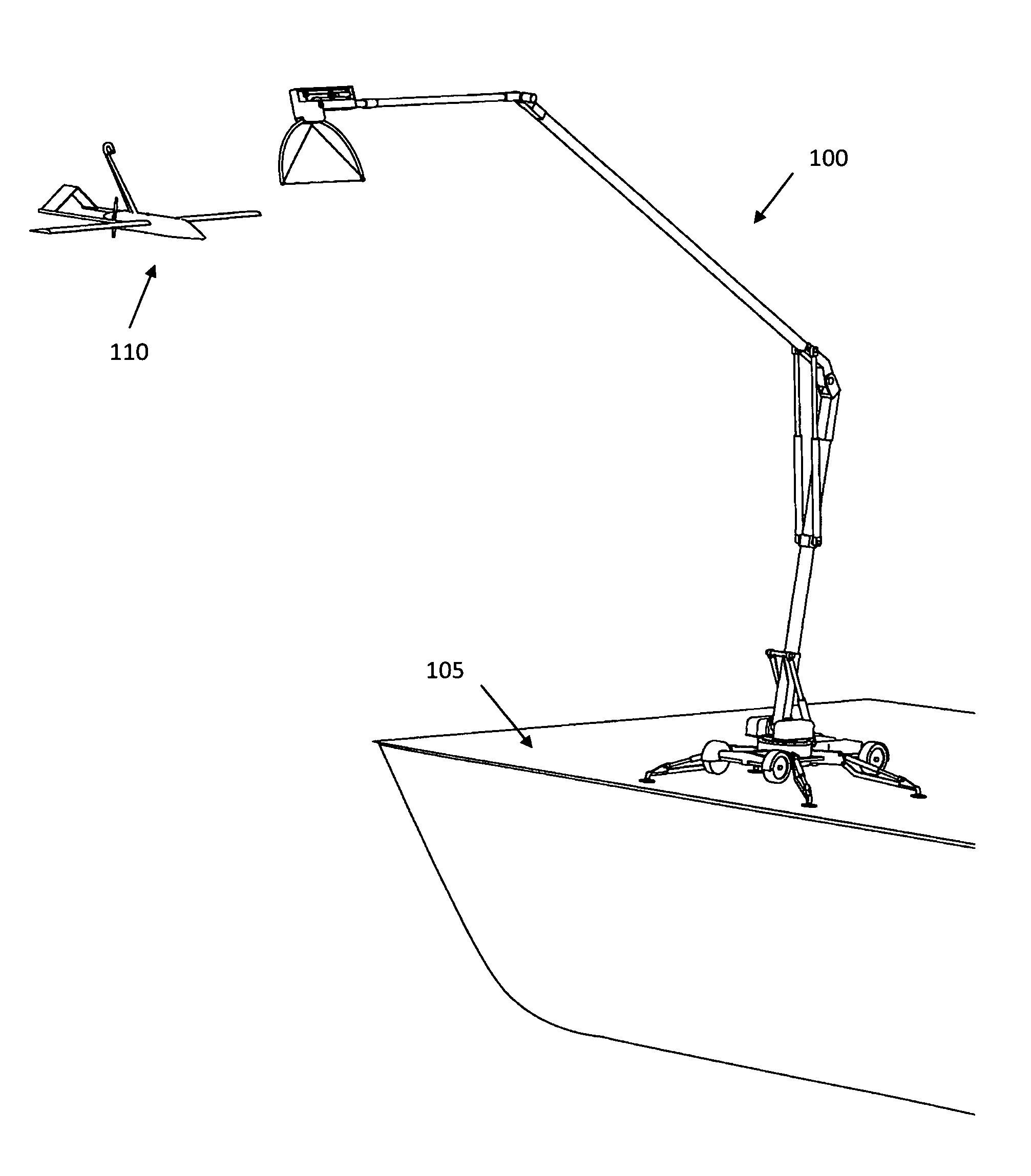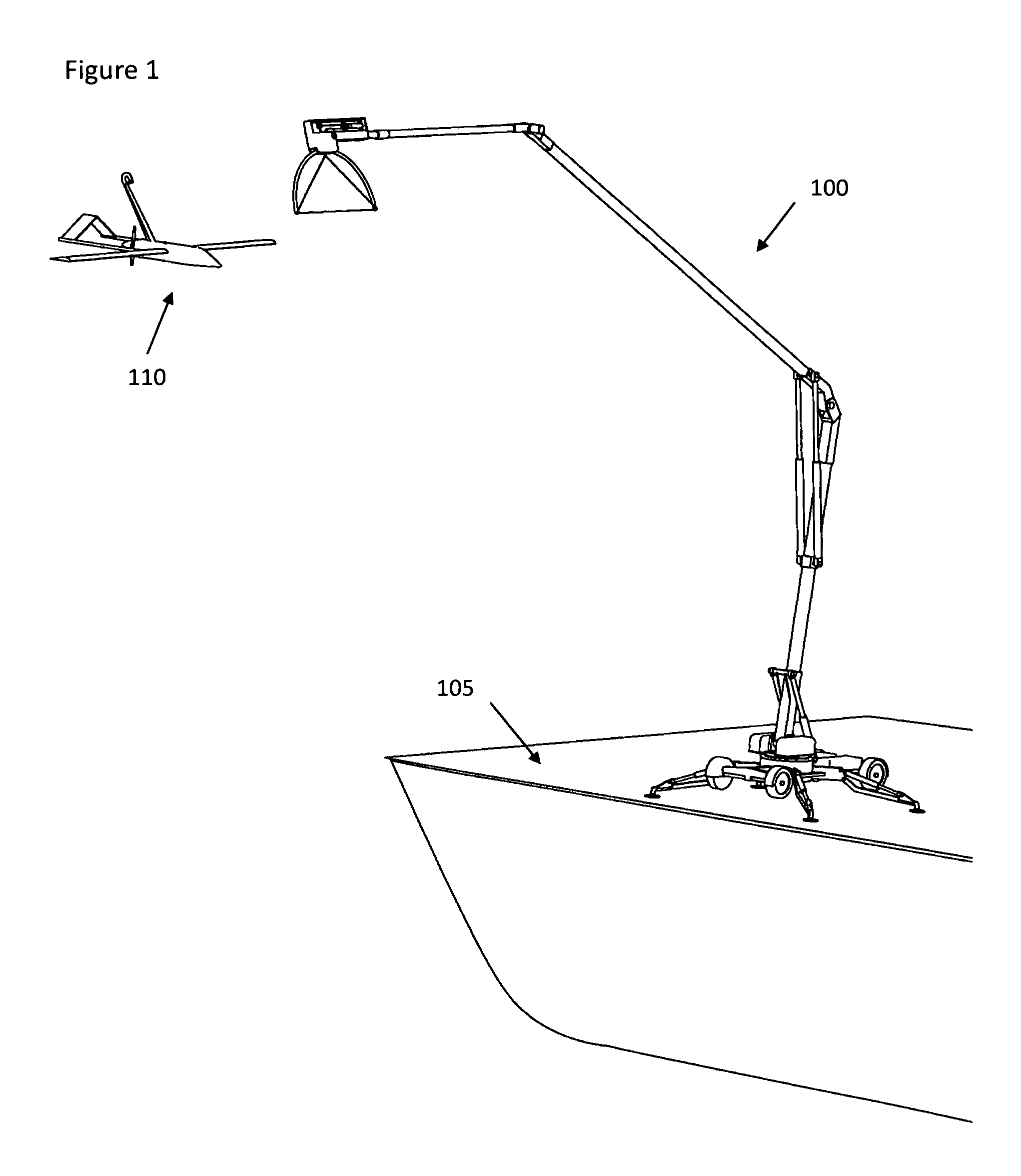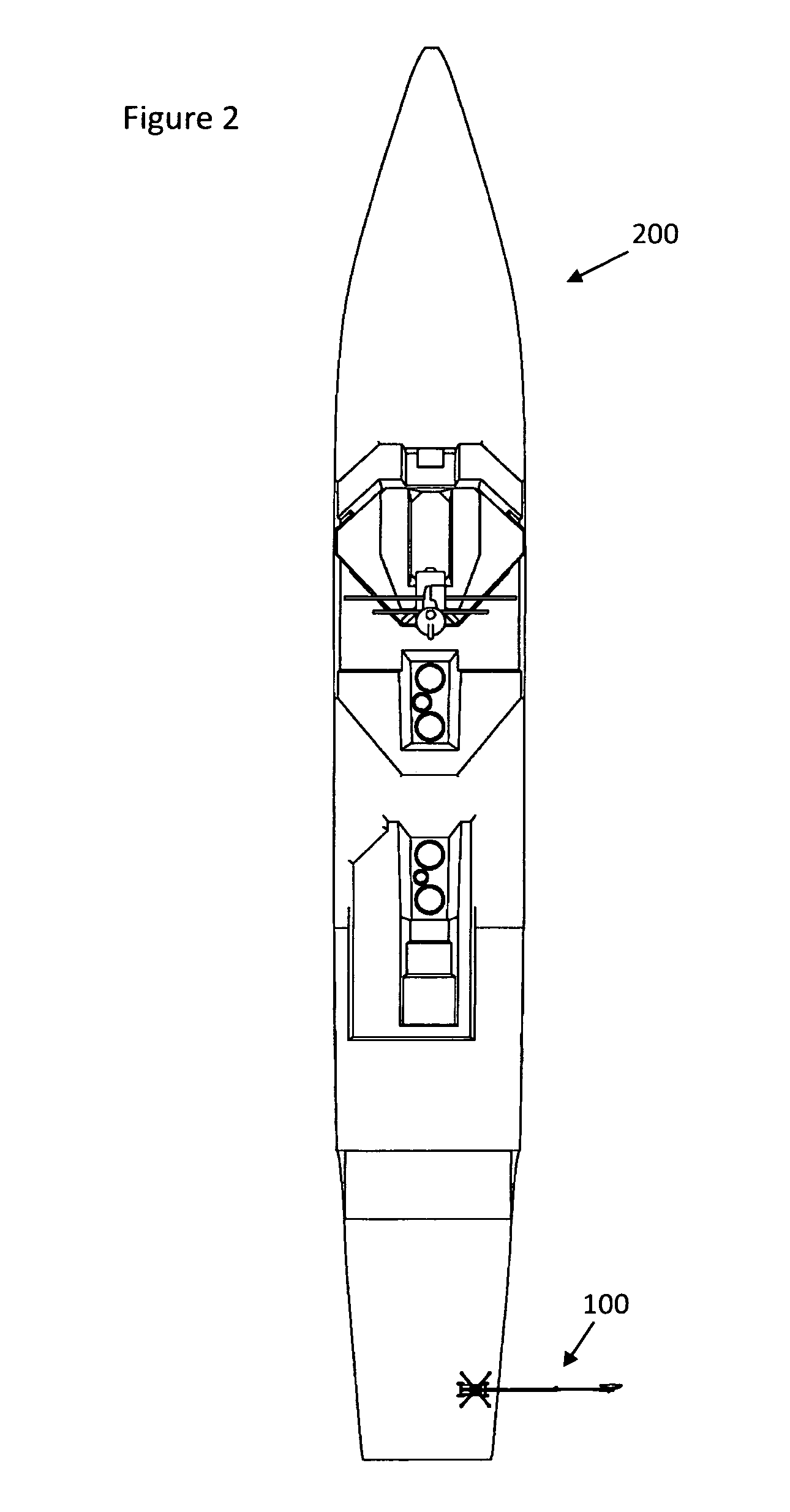Stabilized UAV recovery system
a technology for unmanned aerial vehicles and recovery systems, which is applied in the direction of passenger handling apparatus, process and machine control, instruments, etc., can solve the problems of small flight decks and wave-induced ship motion, risk of damage to the uav, and the potential for the uav to be ensnared in the n
- Summary
- Abstract
- Description
- Claims
- Application Information
AI Technical Summary
Benefits of technology
Problems solved by technology
Method used
Image
Examples
Embodiment Construction
[0028]FIG. 1 depicts the stabilized UAV recovery system in accordance with the illustrative embodiment of the present invention. In the illustrative embodiment, UAV recovery system 100 is mounted to deck 105 of a ship to recover UAV 110 at sea. FIG. 2 shows the relative location of UAV recovery system 100 on ship 200. In some other embodiments, the UAV recovery system, with some modification, is mounted to a ground vehicle and used to recover UAVs over land.
[0029]FIG. 3 depicts the major components of the UAV recovery system 100. These components include computer-controlled robot arm 300 and capture mechanism 305. In a fashion similar to aircraft arrest systems on aircraft carriers, capture mechanism 305 presents arresting line segment 310, which is held horizontally, to incoming UAV 110 that is snagged by arresting hook 315 mounted to UAV 110. Arresting line segment 310 is held between two curved posts 320 of the capture mechanism. In contrast to aircraft arrest systems on aircraft...
PUM
 Login to View More
Login to View More Abstract
Description
Claims
Application Information
 Login to View More
Login to View More - R&D
- Intellectual Property
- Life Sciences
- Materials
- Tech Scout
- Unparalleled Data Quality
- Higher Quality Content
- 60% Fewer Hallucinations
Browse by: Latest US Patents, China's latest patents, Technical Efficacy Thesaurus, Application Domain, Technology Topic, Popular Technical Reports.
© 2025 PatSnap. All rights reserved.Legal|Privacy policy|Modern Slavery Act Transparency Statement|Sitemap|About US| Contact US: help@patsnap.com



